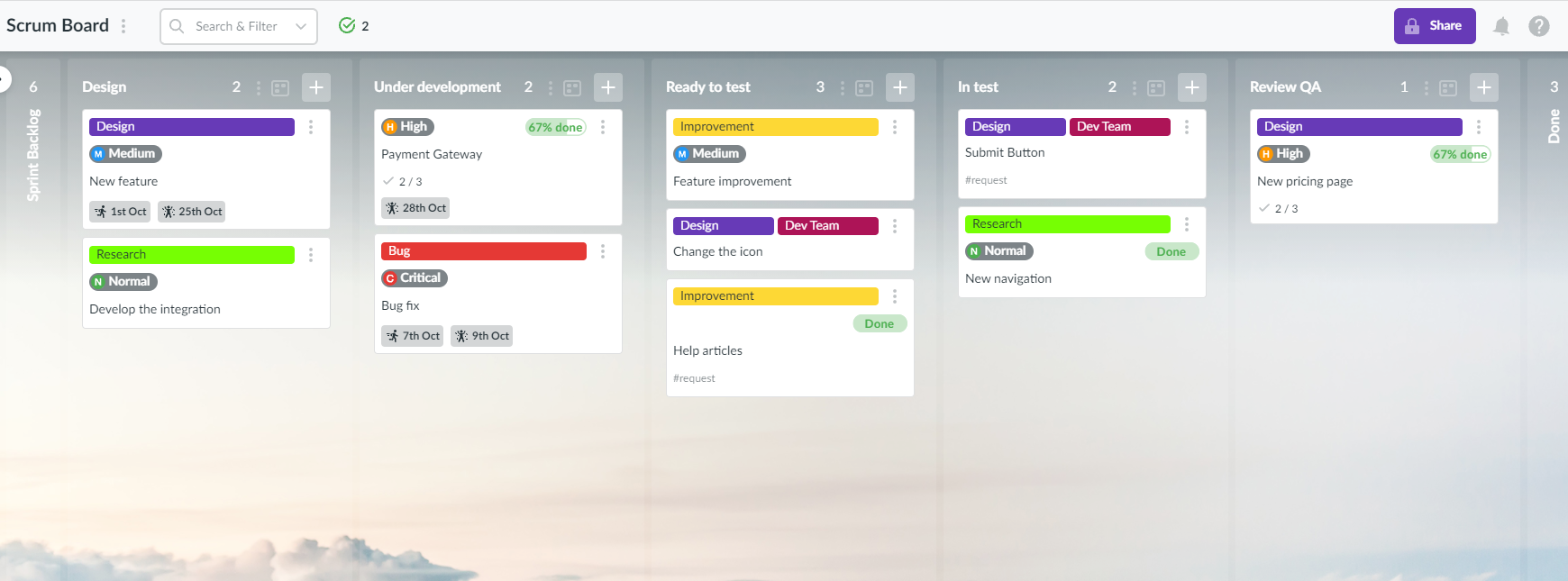What is Scrum project management app?
Scrum is an Agile framework that helps teams generate value through adaptive solutions for complex problems. It is widely used inter alia for project management. Generally, a scrum project management app allows a team to control the processes comprehensively and follow all the scrum aspects.
Scrum Project management
In some cases, scrum beginners may find it difficult to get used to the framework. No wonder! Scrum has many specific elements, terms, aspects and roles. Therefore, it is important to highlight some key points and terms. Scrum Glossary may come in handy.
What roles are used in Scrum?
Let’s get acquainted with the roles.
- Product owner: the person accountable for the outcome of the product. The PO finds ways to maximize the value of the product, indicates tasks and prioritize them.
- Scrum master: the expert who controls that the process follows the Scrum framework. The main role of the Scrum Master is to guide the team.
- Development team: people who execute the tasks.
What are the key elements of Scrum?
Sprint and its planning
Firstly, in Scrum, all projects consist of Sprints. Sprint is a time-boxed period when a team works to achieve a goal. Sprint may be considered as a sort of ‘container’ for Scrum events and activities. Each Sprint ends with delivery. Typically, a Sprint lasts for 2 weeks. However, each team set different timeframes taking into account process specificity. Before a Sprint starts, the scrum team defines the goal, discusses it with the Product owner and plans the tasks in the sprint backlog.
Daily scrum
The team has a daily meeting which is known as daily scrum. Usually, it happens at the same time every day. Also, the duration should be limited to no more than 15 minutes. Such meetings help the team to stay on the same page and keep abreast of developments.
Sprint review
When the Sprint is over, the team makes its review. They discuss what they managed to do within the Sprint as well as what aspects of work stayed undone. Usually, stakeholders join meetings as well. They discuss with the team the increment of the product resulting from the Sprint. After that, future projects can become the topic of discussion.
Sprint retrospective
Likewise to Sprint review, Sprint retrospective is a necessary part of the whole framework as it serves for the analysis. During the retrospective, the team considers the past Sprint under the guidance of Scrum the master. They decide what went fine during the Sprint. Certainly, the team discusses the obstacles they had during the Sprint. Subsequently, they decide how to increase productivity and avoid mistakes during the next Sprint.
Scrum Board
With the help of these key elements, the Scrum method ensures coordinated teamwork. A team may achieve even more using a Scrum board. It can be a physical board, however, it will be much more beneficial to have a board in a Scrum project management app. It will make the whole information visible. With its help, it is easy to monitor and manage the Sprint backlog.
Kanbanchi is an app that can be used for these purposes. Kanbanchi board is a convenient tool to keep track of tasks. All the stages of the Sprint can be easily represented as lists, e.g. Backlog, Design, Under development, Ready to test, In test, Review/QA, Done. Cards will represent tasks.

One board may hold the information about one Sprint. Alternatively, you may place several Sprints on one uniform board. It can be easily implemented in Kanbanchi as it has various features for task categorization, e.g. colour labels, tags, card colours. Once, a Sprint is over, all the tasks associated with it can go into the archive where they will ve securely stored.
Assign tasks to team members. What’s more, Kanbanchi allows set roles for team members. Thus, even a newcomer will understand who is doing what in the team. For instance, you may set such roles as Product Owner, Scrum Master, Designer, Front-end developer, Back-end developer, Tester, etc.
Of course, Kanbanchi will become a great choice not only for development teams. Even if the other department of the company is not going to do Scrum, they still can easily use Kanbanchi for their purposes as the tool has a flexible interface that can be quickly adjusted to any workflow. Don’t hesitate to try Kanbanchi within your company.
